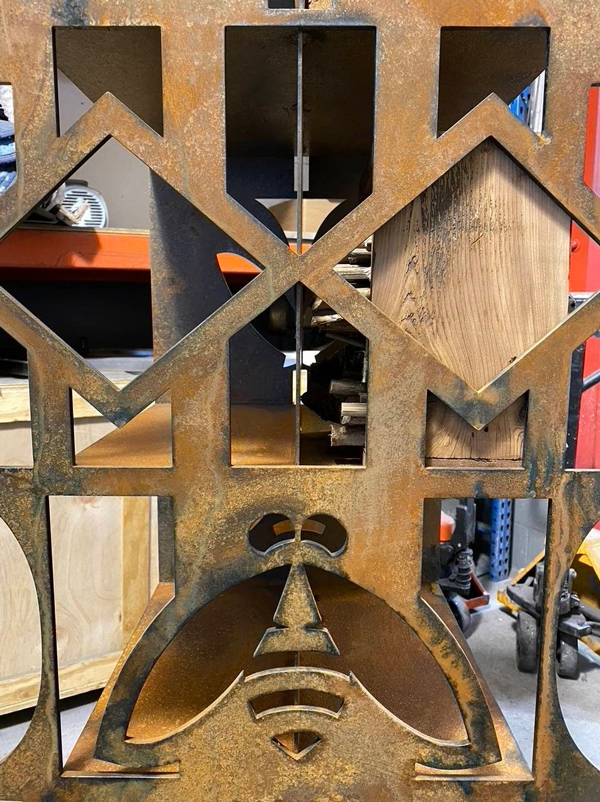Chicago Sculpture International artists build pollinator habitat sculpture
A pollinator habitat sculpture, made out of steel. Families can help artists Emily Moorhead-Wallace and Janet Austin create a pollinator habitat sculpture on March 7.
March 3, 2020
In an upcoming family workshop event on March 7, families can help artists Emily Moorhead-Wallace and Janet Austin create a pollinator habitat sculpture that will be unveiled in time for Earth Day.
Moorhead-Wallace and Austin received the Evanston Arts Council Cultural Funds Grant to finance the sculpture. The two have worked together before on projects like the Chicago Tree Project and are both members of Chicago Sculpture International.
“It’s interesting to merge art and science, and a lot of my work deals with ecological issues and man’s interaction with nature,” Austin said. “By offering this as a partnership with the eco center, we have the support of the community, which is really important.”
Moorhead-Wallace said the pollinator habitat sculpture will be built out of steel and include shelves that can hold wood boxes. The boxes will be stuffed with natural materials, like sticks and pinecones with hollow centers, so the pollinators can rest inside them.
During the family workshop, participants can help trim the material and fit it into the boxes. The Ladd Arboretum, next to the ecology center, will display the finished sculpture. Moorhead-Wallace said she hopes that community members will maintain the sculpture in the future and replace the boxes with new material from their yards.
“The environment needs our support, and a lot of people have been cleaning up their yard and getting rid of a lot,” Moorhead-Wallace said. “You see it as yard waste or trash, but actually we need to keep that around for the insects. There’s been a huge decline in pollinators, especially with the light pollution.”
The artists are also working with the Natural Habitat Evanston group to create their sculpture. Natural Habitat Evanston will ask members to attend the March event to educate workshop attendees about pollinators. The group is also working on a larger initiative called the Pollinator Pledge. The goal of the pledge is to encourage Evanston community members to reduce their use of pesticides and leave their leaves for the pollinators.
Natural Habitat Evanston Co-Lead Leslie Shad said that there have been many collapses in the insect population internationally, so the group is trying to do what it can to offset the decline locally.
Shad said lawns are the biggest crop in Evanston. Since lawns are cut flat and are often sprayed with pesticides, there’s not a lot of wildlife value in them. Lawn mowers and leaf blowers release harmful carbon emissions, and leaf blowers also damage hearing.
“The more and more we have lawns, the more and more we cut everything and everything is all cleaned up,” Shad said. “So something like the sculpture, which will have little tubes, cubby holes and and crevices for little creatures to crawl into — it generates more habitat for insects. I think the sculpture at the ecology center will really demonstrate the need and good practices for helping insects in our yards.”
Email: [email protected]
Twitter: @boassamantha
Related Stories:
– Evanston to work on habitat restoration in lighthouse beach area
– Evanston Ecology Center teaches generations about environment


